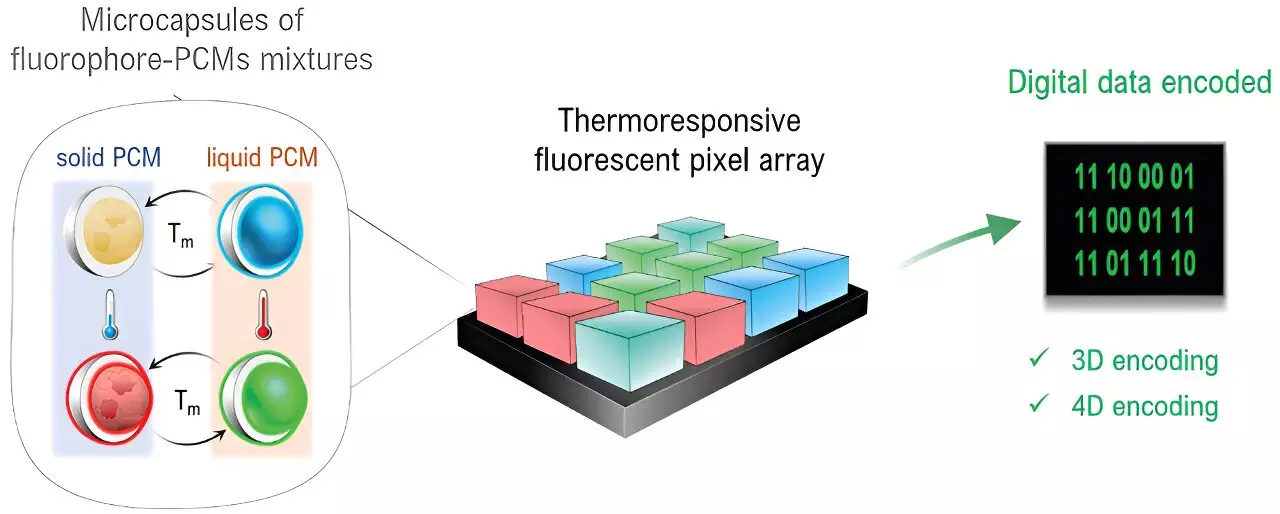Recent advances in data storage technologies have opened new avenues in cybersecurity and data protection, with a team of visionary scientists at the ICN2 Nanostructured Functional Materials Group leading the charge. This collaborative effort, which includes prominent researchers from both ICN2 and the Autonomous University of Barcelona, has culminated in a groundbreaking digital encoding and storage framework that harnesses the unique properties of microcapsules infused with luminescent dyes and phase change materials. Their findings, recently published in the journal Advanced Functional Materials, signal a potential paradigm shift in how we approach data encoding and encryption.
At the core of this innovative storage solution are microcapsules containing a unique blend of fluorescent dyes and paraffin-based phase change materials. These substances are key to the system’s ability to store and emit data upon temperature fluctuations, a feature that serves as the basis for advanced encoding mechanisms. By manipulating these properties, researchers have enabled the creation of “pixels” that can alter their light emission based on temperature changes. This not only allows for an eye-catching display of different colors but also facilitates complex data encoding techniques.
The approach is strikingly efficient, employing a three-dimensional (3D) system to create a layered encoding strategy. Here, the location and color of each pixel correspond to data points, akin to QR codes, while the phase of the paraffin contributes a dynamic fourth dimension—temperature sensitivity—that further enhances the depth of data complexity.
The implications of such an encoding system are vast and multifaceted. In an era where data breaches and counterfeiting pose significant threats to security and privacy, this technology offers a robust defense mechanism. The integration of a digital storage system with multi-dimensional data encoding could effectively safeguard sensitive information across various sectors, from finance to pharmaceuticals. The layered nature of this encoding ensures that even if one dimension is compromised, the others remain intact, thereby enhancing overall security.
Moreover, the technology holds promise for high-density data storage solutions. In a world increasingly dominated by the need for efficient data management capabilities, this innovative system offers a cheap and scalable alternative compared to traditional methods. By utilizing such a strategy, organizations could potentially streamline their data management processes while reducing overhead costs.
As we continue to grapple with the challenges of data security and storage, the contributions from the ICN2 team illuminate a promising path forward. Their application of luminescent dyes and phase change materials not only exemplifies the intersection of chemistry and technology but also highlights the innovative spirit required to tackle modern challenges. With further research and development, this novel encoding system could redefine how industries approach cybersecurity, data storage, and anti-counterfeiting measures.
The advancement in digital encoding and storage technology represents a significant milestone in our relentless pursuit of data security. By capitalizing on the unique properties of creative materials, these researchers have laid the groundwork for innovative solutions that empower current and future technologies. As we look ahead, the potential applications are limited only by our imagination.


Leave a Reply